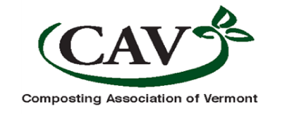Webinars: Phosphorus Movement and Compost Use in Stormwater Management
/In February2019, the Vermont Department of Environmental Conservation, the Composting Association of Vermont, and the Lake Champlain Sea Grant Institute, hosted 2 webinars discussing phosphorus movement in soil and water, and uses for compost as a soil amendment and in erosion control and stormwater management.
The recordings of the two webinars are below. For more information, please contact Natasha.
Phosphorus in Soil and Water: Important Concepts and Emerging Questions
Presenter: Dr. Eric Roy, University of Vermont (2/12/2019)
Update your understanding of how phosphorus interacts with soil, water, and the various best management practices being employed today. We begin with a look at the chemistry of phosphorus and how it changes based on surrounding physical and biological conditions. For example, what’s the difference between total, dissolved and particulate phosphorus, and why does this matter? How do soil characteristics affect the storage, leaching and movement of this nutrient in the watershed? What about compost and the role of healthy soil?
We then explore broader topics like a region’s phosphorus budget over the long term. How can we better store imported phosphorus, and what questions do we have about the long-term effectiveness of various strategies we rely upon? What are the prospects for exporting phosphorus?
The Science of Compost and Innovative Uses for Soil Amendment, Erosion Control and Stormwater Management
Presenters: Geoff Kuter, Agresource, Inc. and Britt Faucette, Filtrexx, Inc. (2/26/2019)
Broaden your understanding about compost and better ways it can be used to improve water quality and soil health. We review the science of compost and the soil it amends, including how it impacts nutrients like phosphorus. We then explore effective strategies and techniques for using compost in a variety of applications, such as to prevent erosion, contribute to site stabilization, remediate compacted soils, establish vegetation, and manage stormwater within various GSI installations. Particular attention is paid to minimizing the risk of leaching phosphorus back into the water.
This webinar also discuss larger concepts as related to compost, such as the pros and cons of meeting Vermont’s goals for diverting organics from landfills and how this relates to limiting phosphorus loads within a watershed.
Due to some technical difficulties during the second webinar, we ran out of time during Britt’s presentation. For those interested, here is a pdf of his full slide deck.

